H+H International A/S
CSE:HH

| US |

|
Johnson & Johnson
NYSE:JNJ
|
Pharmaceuticals
|
| US |
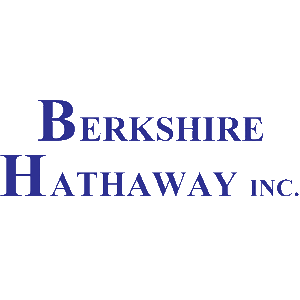
|
Berkshire Hathaway Inc
NYSE:BRK.A
|
Financial Services
|
| US |
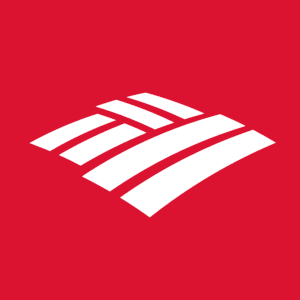
|
Bank of America Corp
NYSE:BAC
|
Banking
|
| US |

|
Mastercard Inc
NYSE:MA
|
Technology
|
| US |
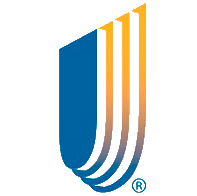
|
UnitedHealth Group Inc
NYSE:UNH
|
Health Care
|
| US |
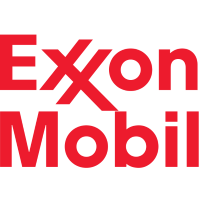
|
Exxon Mobil Corp
NYSE:XOM
|
Energy
|
| US |
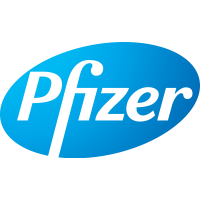
|
Pfizer Inc
NYSE:PFE
|
Pharmaceuticals
|
| US |

|
Palantir Technologies Inc
NYSE:PLTR
|
Technology
|
| US |

|
Nike Inc
NYSE:NKE
|
Textiles, Apparel & Luxury Goods
|
| US |

|
Visa Inc
NYSE:V
|
Technology
|
| CN |

|
Alibaba Group Holding Ltd
NYSE:BABA
|
Retail
|
| US |

|
JPMorgan Chase & Co
NYSE:JPM
|
Banking
|
| US |
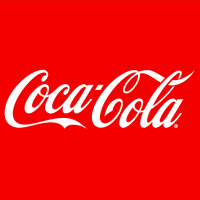
|
Coca-Cola Co
NYSE:KO
|
Beverages
|
| US |
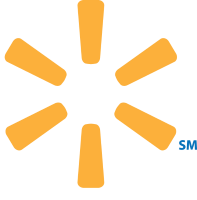
|
Walmart Inc
NYSE:WMT
|
Retail
|
| US |

|
Verizon Communications Inc
NYSE:VZ
|
Telecommunication
|
| US |

|
Chevron Corp
NYSE:CVX
|
Energy
|
Utilize notes to systematically review your investment decisions. By reflecting on past outcomes, you can discern effective strategies and identify those that underperformed. This continuous feedback loop enables you to adapt and refine your approach, optimizing for future success.
Each note serves as a learning point, offering insights into your decision-making processes. Over time, you'll accumulate a personalized database of knowledge, enhancing your ability to make informed decisions quickly and effectively.
With a comprehensive record of your investment history at your fingertips, you can compare current opportunities against past experiences. This not only bolsters your confidence but also ensures that each decision is grounded in a well-documented rationale.
Do you really want to delete this note?
This action cannot be undone.

| 52 Week Range |
69.3
137.6
|
| Price Target |
|
We'll email you a reminder when the closing price reaches DKK.
Choose the stock you wish to monitor with a price alert.

|
Johnson & Johnson
NYSE:JNJ
|
US |

|
Berkshire Hathaway Inc
NYSE:BRK.A
|
US |

|
Bank of America Corp
NYSE:BAC
|
US |

|
Mastercard Inc
NYSE:MA
|
US |

|
UnitedHealth Group Inc
NYSE:UNH
|
US |

|
Exxon Mobil Corp
NYSE:XOM
|
US |

|
Pfizer Inc
NYSE:PFE
|
US |

|
Palantir Technologies Inc
NYSE:PLTR
|
US |

|
Nike Inc
NYSE:NKE
|
US |

|
Visa Inc
NYSE:V
|
US |

|
Alibaba Group Holding Ltd
NYSE:BABA
|
CN |

|
JPMorgan Chase & Co
NYSE:JPM
|
US |

|
Coca-Cola Co
NYSE:KO
|
US |

|
Walmart Inc
NYSE:WMT
|
US |

|
Verizon Communications Inc
NYSE:VZ
|
US |

|
Chevron Corp
NYSE:CVX
|
US |
This alert will be permanently deleted.

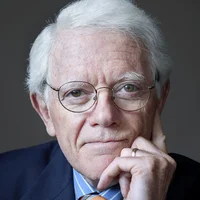


























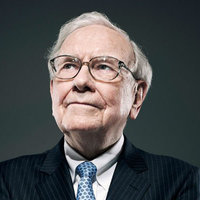
Welcome to the H+H International A/S Financial Reports Q1 2020. [Operator Instructions] I'll now hand the floor to our speakers. Please begin.
Good morning, everyone, and welcome to the conference call for H+H interim financial report for Q1 2020. My name is Peter Klovgaard-Jørgensen, and I'm the CFO of H+H. And with me, I have CEO, Michael Andersen; and our Investor Relations Manager, Cristina Rønde Hefting. We will take you through the presentation, which is also available on our website. The webcast is recorded and will also be available after the call on our website. On Slide 2, there is the agenda for today's call, a short summary about H+H, and I ask you to pay attention to the disclaimer on the forward-looking statements. Moving to Slide 3. I will quickly address key highlights from the first 3 months of 2020 as well as current market outlook. We will go into further details on the following slides. Q1 2020 was a satisfactory quarter, in fact, the highest Q1 result ever in the history of H+H. We had limited impact from the outbreak of COVID-19 in Q1, and we had favorable weather conditions and a pricing strategy that puts pricing in line with expectations. So all in all, a very satisfactory quarter. In the end of the quarter, however, we were impacted by the governmental lockdown in the U.K. that caused closure of distribution centers and building sites. This did impact U.K demand significantly. And in combination with further lack of visibility due to COVID-19, H+H suspended the financial outlook on the 24th of March 2020. We currently still see a very low visibility in the U.K. market, and in general, for second half of 2020, which I'll explain further later. On Slide 4, I would like to outline actions taken in relation to the outbreak of COVID-19 and general contingency planning. Firstly, we have first focused on securing health and safety of our employees as well as customers and visitors. We have enhanced safety precautions across all sites in order to reduce contaminations. Fortunately, none of our employees have been severely impacted by the illness. None tested positive for COVID-19. This also means that our production impact has not been directly linked to contamination but only to external factors, such as previously mentioned U.K. lockdown. As an international company, we're used to working virtually, and the transition to virtual meetings have been relatively easy. Further, we have introduced virtual meetings in our sales channels to maintain customer relations and support the ordering process. Also, overall enhanced safety precautions for visitors and in the distribution are implemented. We have, for a while, had focus on contingency planning. And due to this, we have been able to react swiftly and proactively to the outbreak of COVID-19 and its impact on our markets. We focused on an agile capacity planning, which, in practice, means that we can adjust production quickly depending on inventory levels, in combination with actual and expected demand. On the CapEx side, we are able to reduce planned investments significantly, which currently includes the postponement of the new CSU factory in Poland. So now this factory is postponed to 2021. Other investments are kept to a minimum for the time being, and we will assess the level when consequences of the outbreak of the COVID-19 are more clear. In the meantime, we have taken further actions to optimize cash flow and also increased our committed credit facilities. As we are currently operating in uncertain times, we maintain focus on such contingencies and maintain a financial position that can meet the possible challenges in the future, and that would also allow us to take advantage of potential strategic opportunities. We will pursue our M&A activities and continue this strategic direction. The current environment can generate good M&A opportunities. And with our solid financial positions, we will be able to act on such. Moving to Slide 5. We would like to comment on the recent market development in our markets and provide an overview of the current market situation as per mid-May. In general, we do see continued high activity levels across all our markets, except for the U.K. market. There has been lockdowns in all our geographies, but only in the U.K. had we seen direct impact on our market in the construction sites. Lockdowns in Germany, Poland and Norway did not impact building sites nor distribution centers as the lockdowns more or less specifically excluded merchants in [ our factory shop sites ]. As a result, demand for our products in these markets remained intact. In the U.K., builder's merchants and most house builders proactively shut down business following the lockdown, which naturally affected the demand. As a consequence, H+H has adjusted production output in the U.K. In combination with high stock levels to facilitate the limited demand, the U.K. factories have halted production since April and are using governmental support programs for employees on furlough.Since beginning of May, house builders and builder's merchants in the U.K. have been planning and initiated a phased reopening of building sites and distribution centers. Demand has picked up, yet on a much lower level than prior to the lockdown. The pace and degree of reopening is still uncertain, and thus, gives low visibility to when normal demand will be reached. H+H will continue to adjust production according to stock situation and demand. Our other markets have continued production on normal levels for this season. For Germany, there is a general high order backlog across construction companies, giving support to mid-term demand. We would also like to note that our pricing strategy continues as planned. In Poland, pricing strategy also continues despite increased competition. To conclude, except for the U.K., current trading levels are continuing in our markets. And as per today, sales and the financial performance have been in line with the initial expectations for the year and above last year. We stress that this is the market situation as per today, and the visibility remains low. Moving to the financial highlights on Slide #6. As mentioned, we are overall pleased with the strong performance for Q1, which have had a limited impact by the outbreak of COVID-19. Revenue for the quarter totaled 400 -- DKK 704 million, a growth of 6% compared to last year. Organic growth was 2%, which we believe is a satisfactory growth rate given the current market environment and a very good first quarter in 2019, where we had a growth rate of 22%. EBIT amounted to DKK 85 million, an improvement of 55% or DKK 30 million and corresponding to an EBIT margin of 12%, with an improvement of 4 percentage points compared to last year. We have in the quarter closed the German aircrete acquisition signed in December and paid the outstanding amount. In total, we have paid DKK 74 million, including the last preferred payment in Poland. Our capital expenditure amounted to DKK 21 million, excluding IFRS 16 impact, reflecting a reduced level compared to initially expected. This led to a net interest-bearing debt of DKK 504 million, corresponding to a financial gearing of 0.9x EBITDA. As we have DKK 104 million in IFRS 16 impact, the financial gearing, excluding IFRS 16, is 0.7x. On Slide #7, we take a closer look at the revenue for the quarter. The organic growth of 2% was mainly driven by higher prices across all regions. We're pleased to see that our pricing strategy is intact and had a positive impact on the quarter. That said, as expected, we see increased competition in Poland but have not yet seen any erratic pricing behavior among our competitors. However, we are much aware that the situation could lead to more price pressure in the region. Again, it is important to stress that Q1 was also characterized by favorable weather conditions, which had a positive impact on the performance. With no hard winter, we have seen high level of activity in the beginning of the year. As mentioned, overall revenue growth for the quarter was 6%. And Germany and Poland, as well as the Nordics, Benelux and Switzerland, contributed to the growth in terms of both pricing and volume. In Germany, the acquisition of CSU in Dresden and aircrete in Laussnitz also contributed to the growth. The U.K. market was impacted by lockdown of distribution centers and building sites in the last week of March. The illustrated graph may look severe compared to last year, but bear in mind that Q1 2019 was positively impacted by the destocking following the upgrade of the Borough Green factory. Lastly, also in regards to the growth rate, our other markets grew 8% year-on-year, adjusted for the sale of Russia. Of the total revenue in Q1 2019, Russia's share was 2%. Moving on to Slide #8. We will take a closer look at earnings for the quarter. As mentioned, EBIT was up DKK 30 million and amounted to DKK 85 million, corresponding to an EBIT margin of 12%. In the quarter, we can report strong operational excellence across all markets, including continuous improvements, purchasing activities and synergies from acquired companies. We are pleased to see this development in our earnings.As mentioned, we are seeing price increases across the regions, both on sales prices and input costs. In the quarter, the CSU business was negatively impacted by some phasing of costs and price increases, which we expect to even out in the coming quarters. The difference is also reflected in the gross margin product split. Q1 2020 revenue split reported an aircrete share of 68% and a CSU share of 32%, whereas the gross margin split was 73% and 27%, respectively. As we move to Slide 9, you see the net interest-bearing debt and financial gearing has continued at low levels. The net interest-bearing debt increased DKK 97 million over the quarter and totaled DKK 504 million. Net interest -- the development in net interest-bearing debt was mainly driven by the payment of the acquired German aircrete factory in January as well as the last preferred payment for Grupa Silikaty in Poland, both totaling DKK 74 million. Positive cash inflow from operating activities reduced interest-bearing debt by DKK 17 million, which was driven by higher earnings, partly offset by changes in working capital due to seasonal fluctuations in trade receivables. The CapEx level, including IFRS 16 impact, amounted to DKK 25 million, which was related to maintenance and essential upgrade products.By end of March, financial gearing was 0.9x EBITDA and an increase of 0.1x since year-end. Adjusted for IFRS 16 impact, the net interest-bearing debt totaled DKK 400 million, corresponding to a financial gearing of 0.7x EBITDA. Compared to Q1 last year, we see a decrease of DKK 155 million, driven by a strong operational cash flow and low net impact of acquisitions and divestments. Finally, it's worth mentioning that we, in the beginning of 2020, have utilized an extension option to extend the finance agreement by 1 year to 2023. And further, we have increased our committed facility as additional DKK 0.1 billion of the available credit facility was utilized during the quarter. On Page 10, we have gathered the financial key figures for the first quarter. A few items to highlight is the impressive gross margin of 32% for the quarter, driving the strong EBITDA and EBIT performance, an improvement of 5 percentage points compared to last year. We will continue to strive towards maintaining such higher gross margin. But given the current market situation, we do not expect to keep the high level. Also, the Q1 level reflects a low level of maintenance. We had no special items in the first quarter of 2020 or 2019. Profit before tax amounted to DKK 80 million, up 63% compared to last year. Total equity increased by DKK 415 million compared to Q1 2019, of which DKK 78 million is related to minority shareholders. As per 31st of March 2020, equity amounted to DKK 1.461 billion, equaling a solvency ratio of 50%. Free cash flow was predominantly impacted by the mentioned payment for acquired businesses. As we can conclude, first quarter for 2020 have had a strong performance. We do not see the same levels continue to Q2 as our U.K. business has been severely affected since beginning of April. This leads us to the financial outlook on Slide 11. Earlier in the presentation, we presented our view on the current market situation. As clarity is still limited on the recovery of the U.K. market and the general COVID-19 impact on other markets and demand, H+H will maintain the suspension of the financial outlook for 2020. We will provide the market with updated financial outlook as soon as an assessment of the full year results with reasonable confidence is possible.With that, I would like to open up for Q&A. Operator, over to you again.
[Operator Instructions] And our first question comes from the line of Laurits Kjaergaard of ABG.
Let us start where you left off, Peter, on the CapEx levels. You obviously suspended it, and then now you realized a CapEx of DKK 21 million in the first quarter here. Could you give some more flavor into what we can expect for the full year? Because obviously, revenue and EBIT is difficult to forecast. But CapEx, you have a little bit more control over. And what sort of projects have you perhaps postponed that you were hoping to realize before COVID sort of started locking down society?
Yes. So you're right that, of course, we do have the capability to manage our CapEx. And some of that is also very much depending on the situation and how the market and how general financial decision develops. Overall, we are able to significantly reduce our CapEx spend. Obviously, there's a mix of normal maintenance costs and then more improvement initiatives and then finally, strategic investments, such as the CSU factory in Poland. And basically, what we expect to do is to decrease it to the furthest extent possible but to not miss out on obvious improvement initiatives. So as such, the more bigger strategic investments are postponed for now until we have more clarity, but normal maintenance and obvious improvement ideas are still being carried through. But overall, it will be a significant drop in CapEx.
Can you remind us how much maintenance and improvement usually is for H+H over a year?
I think that overall, our maintenance will be somewhere between DKK 70 million and DKK 80 million overall.
And improvements?
Those are -- varies on the case. And you can say there's no specific need to do those. So that will be more on an ad hoc basis.
Okay. Fair enough. Moving on to something a little bit different here. For the U.K., obviously, this is the part of the business which is hardest hit. My first question is sort of, would you be able to guide, if U.K. didn't shut down its distribution centers and building sites, like we've seen in Poland and Germany, would you then have been able to guide for the full year? So that's -- the question is, is that the most uncertain part of the business at the moment? And then in the second part of that question is, what is the inventory levels of the U.K.? As I understand that you've closed down your 3 lines in the U.K. How much can you keep going? And when do you expect to sort of start ramping up activity again at this point?
So I can confirm that the highest sense on clarity is related to the U.K. market. It is, of course, a key market for us. And it is the market where we have the biggest unclarity in terms of the speed of the recovery of the market. The other markets, you can say, are more stable to that sense. But I will also say that second half is also unclear in terms of demand. And we are, of course, monitoring this very carefully. But we know that new sales of new residential buildings are, of course, somewhat impacted by COVID-19. So in the short term, we have more clarity. But the further we look, and in particular around Q3, Q4, we also have lack of visibility in those markets. In terms of inventory, we do have a rather good inventory level. Typically, for this season, we will build the inventory in Q1, and then demand will typically pick up in -- by the end of second half of March and then April, May and onwards. So we entered the COVID-19 lockdown with a quite reasonable inventory that would allow us under normal circumstances to withhold at least for 1 month, 2 months' period. So of course, now with reduced demand, that will give us potentially a further period of inventory. In terms of the reopening of production, we can do that rather quickly if the demand is there. So as such, we will be able to manage that quite well.
And our next question comes from the line of Kristian Johansen of Danske Bank.
First question is just on Germany. So from what I can see, organic growth in Germany in Q1 was very strong. Historically, we have heard you talk about the German market being, [ at this time of year ], a direct [indiscernible] in terms of volume growth. So can you just elaborate a bit on maybe the different segments and then, in general, what you're seeing in Germany in H1?
So in Germany, overall, as you can see for the quarter, there is a strong development compared last year. And of course, a large part of that is also acquisition driven. But there is also organic improvements in that, obviously. And we have been -- as we have been consolidating our position in the German market for both aircrete and CSU, this will give us a competitive advantage in terms of pricing, and we are utilizing that competitive advantage. So the improvement in Germany is driven by both price but also in volume. In terms of the various segments, you could say we are seeing similar improvements across both aircrete and CSU, where we do see improved volumes and pricing across both.
And the volume improvement in aircrete, is that weather-related? Or is there any change in the market fundamentals, [ participants ]?
There is such no -- it is predominantly weather-driven. Q1 have had very favorable weather, and that also means that all building sites have been open and not impacted by frost or poor weather. So weather is a big driver of this, nonetheless. The market itself has been more or less stable, I would say, at a continued high level. If you recall, Q4, we saw a drop in the CSU order intake, but that actually regained itself by end of Q4 and also continued into Q1. So we have a general good activity in the German market.
Okay. Quite clear. Then on the U.K., can you share how much your revenue was down in April for that part, specifically? I mean what is the magnitude of the drop?
U.K. in April was severely hit. And predominantly, our demand was formed, more or less. So we had -- there was very few local merchants still open and a few local and regional house builders were also continuing business. But by all sense, the construction sites closed down.
Okay. And the speed of the ramp-up you have seen so far in May, so I mean, it sounds like, I mean, you haven't gone all the way down to 0 in April, but it doesn't seem that far. And how fast are you then seeing the ramp-up here in May?
I would say April was close to 0, nonetheless. We had very limited activity. And this also continued into May. Of course, given the latest announcement from the U.K. government, the markets are starting slowly to start up again. So we know that there are some of the merchants that are now opening up more and more. We also have house builders that are opening up more and more. But I think, also, it's important to state that the building sites will not function in the way that it did before. So there are numerous restrictions related to the construction sites. And also, on top of that, we need to bear in mind that the sales sites for the house builders are not open until June 1. So of course, this will impact us going forward. And that also means that we -- it is very difficult to get a clear guidance on the ramp-up sequence, basically.
Okay. Understood. And then you touched upon the -- I mean, obviously, sales of new housing and the impact of COVID-19 from that. Maybe if -- can you remind us -- I mean, the lead time from when a house builder signs a contract with a customer and until you've booked the revenue for the products going into that building. So in other words, I mean, the slowdown we have seen here recently, when will that sort of hit your P&L?
So of course, there are differences from project to project. But typically, we have around 6 months lead time.
But that's the lead time from the customer, if you talk about when the house has been sold until they start building it. Is that how we should understand the question, Kristian? Obviously, at that time...
[indiscernible] Go ahead, sorry.
No. It's just that the typical lead times and what we're commenting on is what -- how long a time it normally takes before a customer can receive a house after they have signed the contract. And that is more than 6 months, close to 6 months in the U.K. But if you talk about from an order has been entered for a house that has not been built until we start building the house, that is less than 3 months, if I understand your question correctly.
Yes. Well, my -- I mean, I can phrase it differently. So when the likes of Barratt Development and so on, when they don't sell any houses in March and April, eventually, that will, I guess, impact your revenue with that customer. So how long ...
Yes. That is, I would say, then I'll go back to -- that's more like 6 months, where we will start to see, because the house builders are also building through stock. So they're selling houses that has already been built. I think what is important when we look into the order portfolio of the house builders, if you go in a little on Barratt and the others, you can see the value of their forward sales. And that is, as far as I recall, around 4 to 6 months of sales that we have in our portfolio. I have to go in and check it correctly, but I think that they were reporting GBP 2 billion when it was normally more than GBP 2 billion on a 6 months -- on a GBP 6 billion revenue. So the normal sales, GBP 2 billion of forward sales to a GBP 6 billion annual revenue, so that is 4 months, if you want to make the calculation mathematically.
Sure. I understand. So obviously, what I'm getting at here is there -- it would be fair to assume that your Q4 revenue could then be impacted by the lower order levels during the outbreak of COVID-19. Any guidance you have there?
Yes. I think there are 2 effects here when we talk about the U.K., Kristian. There is a -- right now, we are impacted, let's say, by what I would call, regulatory effects, which means that it's simply just a regulation that stops the building sites. And there, we are impacted also by the choice of each of the individual house builders in terms of what pace they are deciding to start building again. And some of the larger builders, I think it was Vistry, they said they were trying to open 90% of their sites, and Barratt said that they were aiming at opening 50% of their sites and then gradually more and more. So that's all the regulatory. Then we have the other impact which is from the demand side, which is how many reservations will they receive from the minute where they open their sales offices. Some of the house builders have already had some virtual sales. And I saw also from Vistry that they were actually selling around 50% of expectations, whereas Barratt has simply closed sales and are not taking -- without taking any reservations as far as we've seen in their trading updates. And the big unknown for us right now is that when they open the sales outlets here in the beginning of June, what would be the sales ratio compared to normal levels. And we haven't seen any estimations on that from house builders. If we get very high reservations from the beginning, then we can be more hopeful for the fourth quarter. But as it is right now, we think visibility is so low that it's difficult for us to really predict the profile. We are very, very keen to see the first trading updates from the big house builders and when they come up, and maybe towards the end of June.
Sure. I understand that. And do you have any such indications as well from the German and Polish markets? Because obviously, here, construction sites have continued on. But in terms of sales of new housing, would you have any data on that?
Now the only thing we know is that we can see that the activity levels now are high. That means that we have no regulatory impact in Continental Europe. Governments have been encouraging that people are running as much as they possibly can the building sites. The structuring, especially in our customer base, is that there are many -- many contractors are self-employed. So there's a keen interest to carry on, but no doubt they're carving into order portfolio. We have no indications as to sales rates. We have not started to see a big impact in our quotation numbers yet, but we have seen some indications on permits in some of the markets that there -- it is going down. And there's no doubt when we look at it, our expectation for the second half, obviously, is that, that Continental Europe will be impacted, to some extent, by some of the demand side. The reason why we have suspended our guidance is that we, at this point in time, are not capable of estimating it.
Okay. Yes. I understand that. And then maybe a bit higher level. So if we are looking at a sort of longer economic recession here and demand goes down more severely, what can you do on your cost base to sort of offset this? I mean, obviously, looking into next year as well.
So of course, in general, we are trying to maintain a agile cost structure. And I actually think that -- and as we have also grown our company, it actually does add more agility overall in our -- in sharing of overall cost structures, et cetera. The predominant part of our direct production cost is variable. So we have around 20% or so that is fixed. The rest is basically variable. So of course, we will focus on those. So we say for right now, many of the governments, in particular, U.K. and Germany, have some very good and flexible job retention schemes, which we then, of course, also utilize. And that, of course, is a big contributor to us. And we will not begin to make further FTE reductions for as long as these retention schemes are there because that's basically the essence of those support programs. But of course, as we evaluate the situation and see how both those support programs and general macroeconomic conditions develop, then of course, we will also trim our organization accordingly. The good thing is that if you look, in particular, compared to last year, where we had a very strong demand, we were running at pretty close to full capacity, which also means that we were doing -- we can work overtime, et cetera. And with the lower demand, that would be the first step, the first response would be to eliminate such overtime measures and then after that, of course, look into temporary workers and finally FTE reductions. And then, of course, on the overall overhead structure, we are prepared to make trimming, if need, all depending on what sort of a shape you're looking into in terms of GDP developments. So we will be looking more into a V, a U or, in the worst case, a L shape, where there's no likelihood of a full return in 2021. Then of course, we will start making further adjustments.
If I may add also, Kristian, the government support varies from market to market. And we have some temporary measures in the U.K. We are not so qualified for the current structure of support programs in Poland, but Germany is actually -- and that's not a COVID-19. That's just general regulation they have that they are supporting, what they call Kurzarbeit, for a period of up to 2 years, where we will get support from government if we send people home without dismissing them. And that gives us also further flexibility because when you are on a downward trend, that flexibility will help us tremendously because the -- it's going to be difficult for us still to predict the rate of recovery. And if you make an adjustment of your organization, which, I think, would be hard for us, it's always to do it at the right time and not to be too hesitant. It is still a help for us if we have at least one of our big markets with many workplaces where we can simply reduce capacity with the support of government to give us more flexibility. The last thing I would say is that when we have moved into -- let's say, we move into a permanent lower level for midterm any of years -- a number of years, we also have to expect that there will be some impact on input costs, generally, because there will be the general activity level going down. And therefore, we should take advantage of also our sourcing costs coming down. So we feel that we have a pretty good flexibility as it is right now. And again, also, I just want to also point out the fact that we are now so evenly spread now than we were seen in the past. And you have followed the company so long, Kristian, you could try to imagine how the company would have been 4 years ago if what is happening to us right now in the U.K. was happening 4 years ago. And it just shows the strength of our organization now.
And maybe one more follow-up is that we are quite financially strong, and we have a good cash flow. We have no commitments for the future. We have paid all our acquisitions, and there is no CapEx, significant spend that is committed. So that means that also on a liquidity point of things, we are very flexible, and we have right now an available liquidity of around DKK 700 million. So we are in a good, strong cash flow position.
And our next question comes from the line of Alexander Borreskov at Carnegie Investment Bank.
So just a couple of questions from my side. You mentioned that your price development in sort of the volumes due to weather conditions was partly offset by increased input costs. And we've talked previously about how you expected sort of a delayed impact from postponed supplier price increases from 2019. So I was just wondering if you could give a bit of color on how you see the supplier increases you saw in Q1 stack up to your expectations when you guided in connection with the full year report? And whether these increases represent both postponed increase from last year as well as the increases from this year.
And just follow-up with the last one, I think that's a little bit tricky, honestly, to say what is last year and what is now because we say that there are no price increases already agreed last year that will take into effect this year. So it's all around negotiation, basically. And that means that it's difficult to say exactly if there's any -- what is the exact spillover from last year and what is new. In terms of expectations for the rest of the year around input cost increases, we have been saying before also that we knew that there would be some sort of a delay from 2019 into 2020 in terms of cost increases. We have seen some of that in the quarter, but we also expect further to come in during the next quarter or the quarter afterwards. With that in mind, the current COVID-19 situation, of course, also is a contributing factor here to a little bit of unclarity because, of course, we will continue to negotiate to the best of our efforts. And the current COVID-19 could lead to some potential on that side. We know, for instance, that the oil prices and general energy prices are, of course, dropping. And we saw a little impact of that in Q1, but we also expect a benefit from that going forward. So that's actually on the positive side. On the other side, we can potentially see increases in input cost in terms of cement, lime and sand, all depending on what sort of situation that those suppliers are in, their financial strength and the general market demand. So we are hearing of -- in some cases, where craftsmen and et cetera are actually increasing their prices, for instance, so -- to which extent that will tip into our market is still unclear. So honestly, all in all, we do still expect increases coming in during the year. But there are some mechanisms in the market right now that let the -- make that more unclear, I would say, at the moment.
Okay. And just for clarity, I know that it's hard to sort of estimate what potential impact COVID could have on this. But if you're looking at your expectations for increases following Q1, can you give an indication on sort of how much we're talking about compared to what you saw in Q1? Did you take the majority of the increases during the quarter? Or should we expect sort of majority to come in the following quarters?
I would say that we expect further price increases in the coming quarters. So Q1 was impacted, but not to a severe case.
Okay. That's very clear. And then just one more question for me on trade receivables. Yes. Actually, just scratch that. That was all for me.
And our next question comes from the line of Laurits Kjaergaard of ABG.
Yes. Just one follow-up question. Peter, you mentioned the DKK 700 million availability you have for capital. And obviously, M&A is a big part of H+H's equity story. And we're hearing from other companies, which are also involved with M&A, that they are also raising capital and seeing perhaps opportunities for acquisitions in the COVID markets. Can you say does this change anything on your strategy? Is there any, let's say, family-owned businesses which may be in more trouble than you guys are? Could this change anything? Or is this just speculation from my side?
I would say, first of all, let me be clear that our M&A strategy continues, and the strategic direction that we put forth is maintained throughout this. And we have the financial strength to also react to those opportunities should they occur. We are -- as you know also from previous dialogues, we are having dialogue with various companies. And of course, this dialogue will continue also. And therefore, we are basically maintaining this dialogue. And at the same time, we are also monitoring for potential additional opportunities that could arise, particularly, as you point out, there could be companies that are financially distressed. That would be a good opportunity. It could also be that, in cases like this, there are companies that want to streamline their company further and thereby sell off parts of noncore activities. So we are very much watching for these opportunities and are ready to pursue those. I would say that in addition to the DKK 700 million in committed available liquidity, we do have additional DKK 600 million in uncommitted accordion facility that are also -- that also can be used for such strategic initiatives. So you can say, including that, we are very well off to be making such acquisitions.
Okay. And then just one last question. ROCKWOOL said yesterday on their conference call that they expected renovation market to take off and perhaps take over some of the growth that we've been seeing in the new build market for the past years. Is this something that you are seeing also that perhaps more and more concentration on renovation versus new build? Or what are your considerations?
We do see an increase in requests for quotations in relation to renovation projects, and we see that across our footprint. But unfortunately, we are not as well positioned as ROCKWOOL. If you have to be honest about where I think in that -- probably half of their revenues is RMI, where our percentage is much smaller. But it is an area where we are very focused. We're participating in the Nordic and in quotations for renovation of public facilities. We have quite a big share in Poland of what we call nonresidential. And then in the AAC area, around 50% of the revenue is nonresidential. And that is an area where, if we have, let's say, government stimuli for renovation, we can participate. But we also have to say in the same sense as that the benefit of this is not going to be as big for us as it is for ROCKWOOL, sadly. Yes.
[Operator Instructions] And okay. There are no further questions at this time. I'll hand back to our speakers for the closing comments.
Okay. Thank you, everyone, for listening in. Have a great day. Thank you.